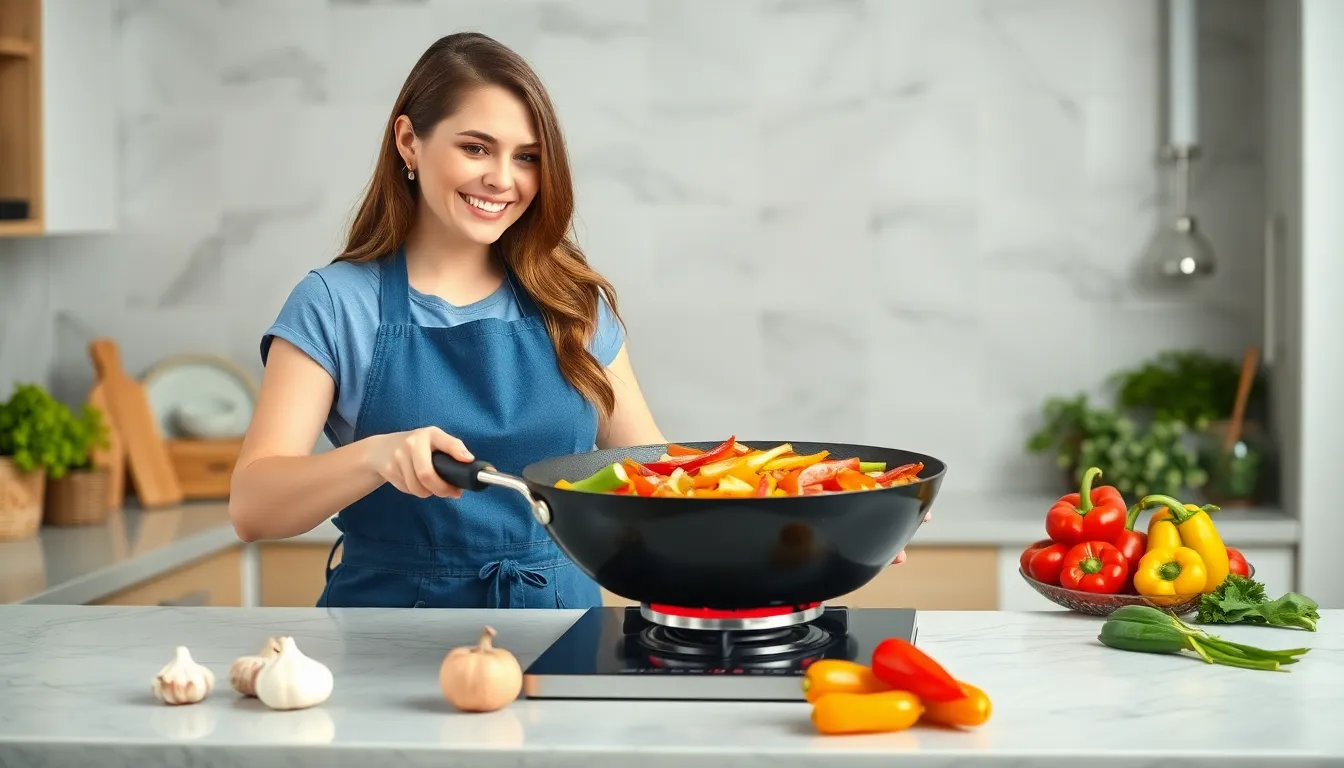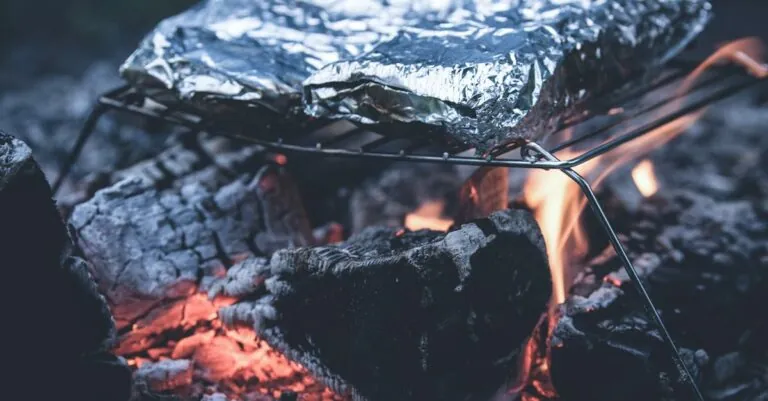Chinese cooking techniques are more than just a way to whip up a delicious meal; they’re an art form that transforms ordinary ingredients into culinary masterpieces. From the sizzling stir-fries that make your taste buds dance to the delicate dumplings that could win a beauty pageant, these techniques are steeped in tradition and flavor.
Imagine mastering the wok like a seasoned chef or perfecting the ancient craft of steaming. Whether you’re a kitchen novice or a culinary wizard, understanding these methods can elevate any dish from “meh” to “wow.” So grab your chopsticks and get ready to explore the vibrant world of Chinese cooking, where every technique tells a story and every meal is a celebration.
Table of Contents
ToggleOverview Of Chinese Cooking Techniques
Chinese cooking techniques encompass a variety of methods that reflect cultural practices and regional diversity. Stir-frying represents a quick cooking method, often using high heat and a small amount of oil. Steaming retains nutrients while producing light, flavorful dishes, making it a cornerstone of healthy Chinese cuisine.
Wok cooking employs a uniquely shaped pan that distributes heat evenly, facilitating rapid cooking. Braising involves cooking food slowly in a liquid, allowing flavors to meld, often seen in dishes like red-cooked pork. Roasting adds depth of flavor and appealing textures to meats and vegetables, showcasing the technique in Peking duck.
Poaching gently cooks ingredients in simmering liquid, commonly applied to fish and chicken dishes. Deep-frying creates crispy textures, often used for spring rolls and dumplings. Grilling infuses a smoky flavor, making kebabs and other skewered foods popular, particularly in northern regions.
Fermentation is another vital aspect, used to create sauces and condiments like soy sauce. The art of making dumplings highlights technique and precision, symbolizing family gatherings and celebrations. Each cooking method tells a story and builds a connection to the culture, offering cooks an avenue for creativity and expression.
Overall, these techniques create a vast array of dishes celebrating flavor, texture, and tradition in Chinese cuisine. Each method contributes to the richness and diversity of the culinary landscape, inviting exploration and mastery.
Essential Tools For Chinese Cooking

Essential tools enhance the process of Chinese cooking, allowing mastery over various techniques. Two of the primary tools are woks and cleavers, each serving specific functions that complement traditional methods.
Woks
Woks play a central role in Chinese cooking due to their unique shape and versatility. They heat quickly and distribute heat evenly, making stir-frying efficient. Various materials, such as carbon steel and cast iron, are commonly used, each offering its own benefits. A seasoned wok develops a natural non-stick surface, enhancing flavor and texture in dishes. Moreover, woks can be used for steaming, boiling, and deep-frying, demonstrating their adaptability in the kitchen. Proper care, including regular seasoning, ensures longevity and performance.
Cleavers
Cleavers are essential in Chinese kitchens, known for their weight and sharpness. They excel in chopping, mincing, and slicing, making them indispensable for preparing ingredients. A traditional cleaver features a broad blade that allows for various cutting techniques, from fine dicing to coarse chopping. These tools are not limited to vegetables; they also handle meats with ease. The flat side of a cleaver can smash garlic or ginger, simplifying meal preparation. Regular maintenance, such as honing the blade, ensures consistent performance and precision.
Popular Chinese Cooking Techniques
Chinese cuisine features several essential cooking techniques that enhance flavors and elevate dishes. These methods showcase ingredients and traditions, making them integral to the culinary experience.
Stir-Frying
Stir-frying ranks as one of the most popular techniques in Chinese cooking. This quick approach requires high heat, oil, and constant movement of ingredients to create perfectly cooked dishes. Vegetables maintain their crisp texture and vibrant colors, while proteins like chicken or beef develop beautiful sear marks. A wok’s curved shape allows heat distribution around the surface, providing versatility and efficiency. Classic dishes like Kung Pao Chicken exemplify the effectiveness of stir-frying, showcasing a medley of flavors in a short cooking time.
Steaming
Steaming is a healthier cooking method that preserves nutrients and moisture in ingredients. Traditionally, bamboo steamers or metal steaming racks elevate food above boiling water. This technique works wonders with dumplings, fish, and vegetables, allowing natural flavors to shine through without added fats. The gentle cooking environment retains essential vitamins and creates a soft, tender texture. For instance, Xiao Long Bao, a soup-filled dumpling, demonstrates the mastery of steaming, delivering delightful bursts of flavor.
Braising
Braising combines both wet and dry cooking methods, leading to tender, flavorful results. It begins with searing ingredients at high heat, followed by a slow simmer in liquid, which could include stock, wine, or sauce. This technique infuses flavors deeply into the main ingredient, making meats or vegetables incredibly tender. Dishes like red-braised pork often benefit from the balance of spices and aromatics during the braising process. The liquid method also helps build a rich sauce, perfect for pairing with rice or noodles.
Roasting
Roasting in Chinese cuisine emphasizes the development of crispy textures and robust flavors. High heat accomplishes beautifully caramelized surfaces on meats such as roast duck or char siu pork. Marinades often include soy sauce, honey, and spices, ensuring an aromatic coating that enhances taste. Over the cooking period, moisture evaporates, leaving a delightful crunch on the exterior while maintaining juiciness inside. Signature dishes like Peking Duck illustrate the art of roasting, creating a holiday favorite rich in tradition and flavor.
Regional Variations In Chinese Cooking Techniques
Chinese cooking techniques vary significantly across regions, showcasing unique flavors and methods. Each area contributes its culinary identity, enriching the overall diversity of Chinese cuisine.
Cantonese Techniques
Cantonese cooking emphasizes freshness and subtle flavors. Steaming, a prevalent method, allows ingredients to retain their natural taste and nutrients. Dishes like steamed fish and dim sum highlight this technique’s mastery. Stir-frying also plays a crucial role, often featuring seasonal vegetables and high-quality meats. The Cantonese often incorporate sauces like oyster sauce and hoisin, enhancing the taste without overwhelming it. Wok hei, the charred aroma from a well-seasoned wok, is essential in defining the character of Cantonese dishes. Overall, the focus remains on light seasoning, allowing the main ingredients to shine through.
Sichuan Techniques
Sichuan cuisine stands out for its bold flavors and vibrant spices. The use of Sichuan peppercorn creates a distinctive numbing sensation, setting it apart from other styles. Techniques such as dry-frying and deep-frying are common, enhancing flavor and texture in dishes like Kung Pao Chicken and Mapo Tofu. Braising with intense spices and chili oil results in deeply flavorful meals. Stir-frying remains popular, with a focus on quick cooking that preserves the freshness of ingredients. Techniques also include pickling and fermentation, providing umami richness essential to Sichuan dishes. Altogether, Sichuan cooking embodies a heat-filled adventure for palates, showcasing a unique culinary heritage.
Chinese cooking techniques offer a remarkable journey through flavor and tradition. Each method reveals the cultural significance behind the dishes and showcases the skillful artistry of chefs. The diverse approaches to cooking not only enhance the taste and presentation of meals but also celebrate the rich history that defines Chinese cuisine.
As cooks embrace these techniques they unlock a world of culinary possibilities. Whether it’s the quick sizzle of stir-frying or the gentle steam of dumplings each method invites creativity and experimentation. By understanding and mastering these techniques anyone can bring the essence of Chinese cooking into their own kitchen.







